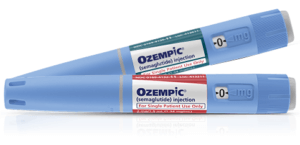The Strange Story of Ergot
The story of ergot drugs begins with a fungus called Claviceps purpurea, which grows mainly on rye and other grains. For centuries, people did not know that eating bread made from infected grain could cause serious illness. Historical accounts describe outbreaks where entire towns experienced burning pain in their hands and feet, frightening hallucinations, muscle spasms, or even the loss of limbs. This condition became known as “St. Anthony’s Fire,” named after monks who cared for the sick.
While ergot poisoning caused great suffering, early healers also discovered that tiny, carefully controlled amounts of the fungus could influence muscle contractions in the body. This made it useful during childbirth, long before anyone understood how it worked. Over time, scientists isolated the active compounds and learned to create standardized, safer medications from them.
What are Ergot drugs?
Ergot drugs are medications made from chemical compounds called ergot alkaloids, which come from the ergot fungus. These compounds can affect the brain and the circulatory system. Today, ergot drugs are manufactured in controlled environments so that the dose and strength are exact, making them much safer than the historical accidental poisonings caused by contaminated grain.
Doctors may prescribe ergot-derived medications for certain migraines, hormonal disorders, and neurological conditions. Some forms also help regulate blood vessel tone and nervous system signals.
How Ergot works in the body
Ergot compounds influence chemical messengers in the brain and throughout the body, including dopamine, serotonin, and adrenergic receptors. Depending on the specific medication:
- Some ergot drugs tighten blood vessels in the brain to reduce severe migraine pain.
- Some act on dopamine receptors to help manage movement disorders such as Parkinson’s disease.
- Others are used to influence hormone release in certain gland disorders.
The key to their safe use is dosing: a small, controlled amount may help symptoms, while too much can cause serious side effects.
The dark side: Ergot poisoning and “St. Anthony’s Fire”
Before scientists understood the cause, ergot poisoning was believed to be a curse or punishment. The real problem was that ergot-infected grain was being eaten regularly. If too much ergot builds up in the bloodstream, the blood vessels can narrow too much, cutting off circulation to the fingers, toes, hands, and feet.
Symptoms of ergot poisoning may include:
- Burning, tingling, or numbness in the limbs
- Headache, nausea, or digestive upset
- Muscle spasms or seizures
- Hallucinations or confusion
- In severe cases, damage to body tissue due to lack of blood flow
This history is a powerful reminder that natural substances can be both useful and dangerous, depending on how they are used.
From Ergot to LSD: The unexpected offshoot
In the 20th century, scientists studying ergot compounds created a substance later known as LSD (lysergic acid diethylamide). Its hallucinogenic effects were discovered by accident, and although LSD is no longer used medically, it has played a major role in research on brain chemistry, perception, and mental health. This unusual chapter shows how one small chemical change in a molecule can create a completely different effect.
Modern medical uses of ergot and its derivatives
Despite its dangerous history, ergot has a significant pharmaceutical footprint in modern medicine. Ergot alkaloids and their derivatives can be prescribed for various conditions. Their effectiveness is primarily due to their actions as agonists or antagonists on dopamine, serotonin, and adrenergic receptors.
Some of the current usages of ergot-derived drugs include:
- In obstetrics, midwives historically used controlled doses to induce labor or abortion, though this was dangerous. Today, isolated ergot alkaloids like ergometrine are used in precise doses to prevent postpartum hemorrhage.
- In treatment of persistent migraines, ergotamine, isolated in 1918, is a standard treatment for severe migraines because it constricts blood vessels.
- For Parkinson’s Disease, ergot-derived drugs can be used to treat the symptoms, often alongside levodopa therapy. They work by acting as dopamine receptor agonists, which helps manage movement and coordination.
- For conditions involving persistently high levels of the hormone prolactin (hyperprolactinemia and prolactinomas), using dopamine agonists derived from ergot. These drugs inhibit the release of prolactin, helping to address related issues such as infertility, amenorrhea (absence of menstruation), and abnormal lactation (galactorrhea).
- For acromegaly, a disorder caused by the pituitary gland producing too much growth hormone.
- In treatment of dementia and cognitive decline, combinations of hydrogenated ergot alkaloids have been used to treat the symptoms of age-related cognitive decline and certain types of dementia, including aspects of Alzheimer’s disease. The efficacy of these treatments is still under review, but they are thought to potentially improve cerebral blood flow and metabolism.
- Dihydrogenated ergot compounds have also been found to be useful in managing conditions like orthostatic hypotension (a form of low blood pressure that happens when standing up from sitting or lying down).
How to access ergot-derived drugs safely
While traditional ergotamine products are rarely used today, newer migraine and Parkinson’s treatments available through trusted pharmacies like IsraelPharm offer effective care with fewer risks.
IsraelPharm supplies licensed and tested prescription medications that treat conditions once managed with ergot-based drugs, such as:
For migraine relief:
For Parkinson’s disease:
All ergot-derived medications should only be prescribed by healthcare professionals who are aware of the possible side effects, which can vary from patient to patient. IsraelPharm can only supply these drugs when the order is supported by a current prescription from a U.S. doctor.
Frequently asked questions about ergot
What are the side effects of ergot?
Ergot poisoning occurs when too much ergot alkaloid accumulates in the body. Historically, this happened when people ate bread made from contaminated grain. Today, poisoning is more likely to occur through misuse or overuse of ergot-based medications. Symptoms may include burning or numbness in the limbs, nausea, headaches, muscle spasms, and trouble with circulation. In severe cases, blood flow to fingers or toes can be reduced for too long, leading to tissue damage. This is why proper prescription guidance and treatment supervision are essential.
Why are ergotamine products very rarely used today?
Ergot-based medications can be safe when used exactly as prescribed. They are often reserved for situations where other treatments are not effective. The key concern is dosing and duration. Because these drugs can affect blood vessel size and circulation, they must be monitored carefully. A healthcare provider evaluates whether the benefits outweigh the risks for each person and may adjust dosage or switch treatments if side effects appear.
What conditions are treated with ergot drugs?
Ergot-derived medications are used in several areas of medicine. Some forms help relieve severe migraines by tightening blood vessels in the brain. Others are used in treating Parkinson’s disease by acting on dopamine receptors to help control movement. Some are used in hormonal conditions where the body produces too much prolactin. In obstetric medicine, certain ergot compounds help control severe bleeding after childbirth. Each treatment is carefully tailored to the patient’s needs.
What drug is developed from ergot?
Certain migraines are linked to widened blood vessels in the brain. Ergotamine works by narrowing these vessels again, which can reduce pain. It is often used when migraines last a long time or do not respond to other medicines. Because it can strongly affect circulation, doctors usually limit how often and how much a person can take. They may also recommend newer migraine treatments that work differently and may have fewer side effects.
What is the connection between ergot and LSD?
LSD was created from a chemical found in ergot during laboratory research. The scientist who made it discovered its hallucinogenic effects accidentally. While LSD is no longer used as a drug treatment, it has influenced research into brain chemistry and perception. Its discovery shows how one plant or fungus can lead to many different kinds of medicines, or substances with powerful psychological effects, depending on how it is studied and modified.














